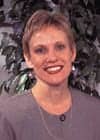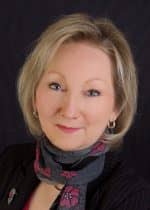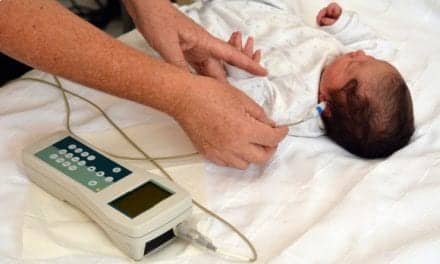The goals of the Audiology Foundation of America are to encourage audiology as a career path, and educate consumers on hearing problems and solutions.


Founded in 1989, the AFA has been working to establish a degree, the doctor of audiology (AuD), as the entry level to the profession to give it the status—like that of optometry—of a doctoring profession. There are a number of practical and professional reasons why the AuD is necessary. “Since 1965, the master’s degree was the entry level degree for the practice of audiology,” says Goldstein. “There were two problems with that. Problem number one was that the audiologists were erroneously being called ‘doctor’ by their patients because patients are accustomed to their dentist being a doctor, their optometrist being a doctor, their podiatrist being a doctor, to say nothing of their physician, so [audiologists] had to always explain, ‘No, I’m not really a doctor.’ And number two, it was clear that the practicing audiologists were carrying a disproportionate burden in the education of [new] audiologists. These two issues led to a need for a change in the educational system. It’s really about the educational system.”
The AFA has developed a brochure to encourage those entering and attending college with an interest in science and the health care field to consider an audiology career. “We’re marketing [the brochure] toward counselors in schools of health sciences and preprofessional schools, so those people start to think of audiology as a potential career,” says Susan Paarlberg, MSIR, executive director of the AFA. “A lot of people have never heard of it. We want audiology to be a household word, we want patients, consumers, to find an audiologist, and we want young people to consider it as a career potential.”
The AFA not only exists to encourage students, but to help schools develop AuD programs. “We’ve helped schools develop their proposals to begin an AuD program by giving them information,” says Paarlberg. “We have a library of all the AuD information, so if you have to justify there’s a need for a program, for instance, we have the information that we can send out and try to help them by being the clearinghouse for information. If there’s information on AuDs, we have it.”

Of the 15,000 practicing audiologists, about 850 have an AuD. The AFA has set a success target of graduating 5,000 AuD-qualified audiologists by 2015, a goal that could be achieved sooner considering that graduating classes at many of the 19 AuD programs are averaging about 50. In the fall, eight more schools will begin offering the AuD degree. But the goal is to develop more quality audiologists, not just have a large number of programs. “To some extent, I think we’re suffering a little bit from our success,” says Ken Lowder, AuD, chairman of the board of the AFA. “The AFA’s vision is to have 15 or 20 professional schools of audiology in the country, not 300. It seems like, in the last few months, hardly a week goes by that some college or rather small, obscure university announces a new AuD program. And we worry about that. We worry that they’re just draping their former master’s degree programs in an expensive suit and calling them AuD programs.”
The AFA has also helped develop stopgap distance learning programs for practitioners to earn the AuD degree without having to spend much time on campus. The programs are now available at five universities. But they will not exist forever, says Goldstein. “Those distance learning programs are bridging programs, they’re a bridge for the existing practitioners to gain the recognition that they really deserve,” he says. “Regardless of what kind of postgraduate education they received, through CEUs, workshops, training, and experience, they’ve reached the level of the doctor and need to have the ability to say that they are now the hearing doctors.”
Lowder, an audiologist for more than 20 years, received his AuD in 2000 through the distance learning program at the University of Florida. “I had already been in private practice, and I was pretty good at it,” he says. “I had always kept up on things. I did not have the feeling that I was behind the power curve. I felt like I was right up to speed, but I have to say that when I went back and sat in classes, there’s no question that I picked up additional information that’s really been helpful, too. There’s no question that I’m a better audiologist today. And I think if you surveyed anybody who went through the program, they’d say exactly the same thing.”

Though the dream of the AuD-educated audiologist will be realized in the 21st century, it was an idea spawned in the 20th. As early as 1948, there were discussions about establishing a doctor of audiology degree. But it took a change in the mind-set of audiologists to get the AuD juggernaut rolling. “As more audiologists started to enter into private practice, they began seeing themselves at a competitive disadvantage by not having a professional doctorate,” says Lowder. “I think most of the audiologists out there began to see that the training they had received with master’s degrees was nowhere near adequate enough. I think that was the main motivation really coming from private practitioners.”
It was the Academy of Dispensing Audiologists (ADA) that took up the cause of the AuD in 1989, forming the AFA, which is now a completely separate 501(c)(3) nonprofit organization.
Headquartered in West Lafayette, Ind, the AFA has five full-time staff and, since 1993, has given out $400,000 in scholarships. Funding for programs comes from individual donations, a charity golf tournament, an art auction, and corporations.
And the increased status earned with the AuD may make practitioners more effective in delivering care. “There’s no question that my patients, even though they called me ‘doctor’ before, look on me with a bit more respect,” says Lowder. “There’s also no question that I can interact with other professionals easier than before. When I call a physician’s office in town and say, ‘This is Dr Lowder on the phone,’ it’s a subtle thing, but I don’t have a lot of trouble getting through to other physicians as compared to before.”
Goldstein adds that another benefit of the AuD degree is making training much more uniform and systematic. “The model curriculum [we’ve developed] deals with an integrated, carefully sequenced process of preparing the practitioner for the general science, the health science, the technology, and also the attitudes of being a doctor,” he says. “[In the old system,] a student could easily go to university A for the bachelor’s degree, university B for the master’s degree, and university C for the PhD. It’s very inefficient. For example, the undergraduate audiology degree contains professional audiology education. The professional degree contains research training education. The doctoral degree, which is supposed to be a research degree, includes practitioner, clinical training. It’s a mishmash where everything overlaps, it’s terribly inefficient, a great deal gets repeated and even more gets lost. A single 4-year curriculum for the AuD degree now…can organize a coherent body of knowledge, which produces a better prepared practitioner.”
The AuD degree not only has benefits for audiologists and patients, but manufacturers as well. “I think that manufacturers have been playing the primary role in educating dispensers from the get go,” says Lowder. “To them, [the AuD] is nothing new. This is just an extension of what they’ve been doing for years. For many years, it really wasn’t the associations—it wasn’t the American Speech-Language-Hearing Association (ASHA), it wasn’t the American Academy of Audiology (AAA), it wasn’t ADA—it was the manufacturers that people like me could go to regularly for nuts and bolts information about how to run a practice, how to fit a hearing aid. So, I think, the manufacturers jump for joy at a better educated, more knowledgeable group of audiologists and dispensers out there. This is nothing but good news for them.”
And the AuD degree is not the only way the AFA is raising the status of the audiologist. “We have a new program…called Patient Satisfaction,” says Paarlberg. “We’re trying to help audiologists look like other doctoring professionals where they can prove that they are quality practitioners and provide quality care with some real data. This will help them get contracts. For instance, if you want to get a HMO contract, usually you have to prove that you are good like you say you are, so this will help audiologists be ready to do that. We provide the E-PAC, evaluation of practicing audiologists capabilities [program], and that is a systematic analysis of current, existing capabilities… and based on that, they may be granted some college credit in one of these distance education programs.”
The AFA has also developed a symbol for audiologists, which can be downloaded from the AFA’s Web site (www.audfound.org). “We’re trying to help the profession look like other professions where they have their own symbol, so they can have some cohesiveness,” says Paarlberg.
But the success of programs like these is dependent on the success of the AFA’s core mission. “Some of these goals are impossible to attain unless all of the audiologists in the profession are doctors of audiology,” says Lowder. “We can’t petition the federal government, for example, to grant us the authority to bill them directly for hearing tests unless we can show that most, if not all, of our practitioners are trained to this level. If we still have 25% or 30% that have master’s degrees and refuse to take advantage of the higher level skills and training, we won’t then be able to achieve some of these goals.”
And getting AuD programs established is only a small step in a bigger sequence, adds Lowder. “The first step really was to convince the profession that the AuD was needed,” he says. “The next step is to actually get a university or two to actually come up with an AuD degree. There was monumental resistance to doing that, but we did it. The next step is then to help form a new organization that would provide standards and accreditation for these new programs. The AFA was directly involved in getting discussions under way to accomplish that goal. The discussion has been taken over by AAA and ADA. And they’re now taking a look at standards. And we see that as a way of limiting entry of institutions—colleges and universities—that aren’t really prepared to offer the degree. I think the last and final step in the process is to enter into the legislative arena and change state laws with regard to how audiologists are practicing.”
The early steps are already meeting with success. The perception of audiology as a profession is changing. “For one thing, the universities that fought us tooth and claw are now calling for information to start an AuD degree program,” says Goldstein. “It’s made an enormous difference to them when their own graduates and the people they rely on to provide the educational support are now doctors of audiology.”
Paarlberg adds that the change in perception is moving beyond the ivy-covered walls. “I’ve heard from people who have gotten their doctorate degree—these are mostly returning adults more than the younger ones—but they’re saying it’s making such a difference in how they’re perceived by their peers, their colleagues,” she says. “If they’re working in a medical center, they now get added to the staff list with the doctors. We’ve done some surveys on this and we’ve found that very definitely people are seeing an improvement and they’re feeling better about themselves. Patients are more willing to take their advice. What I keep envisioning is, as people get good help and are happy with it, they’ll spread the word. We have come a long way. This profession is beginning to really look good, but we all have to keep pushing it because we have a long way to go.”
Chris Wolski is associate editor of Hearing Products Report.





